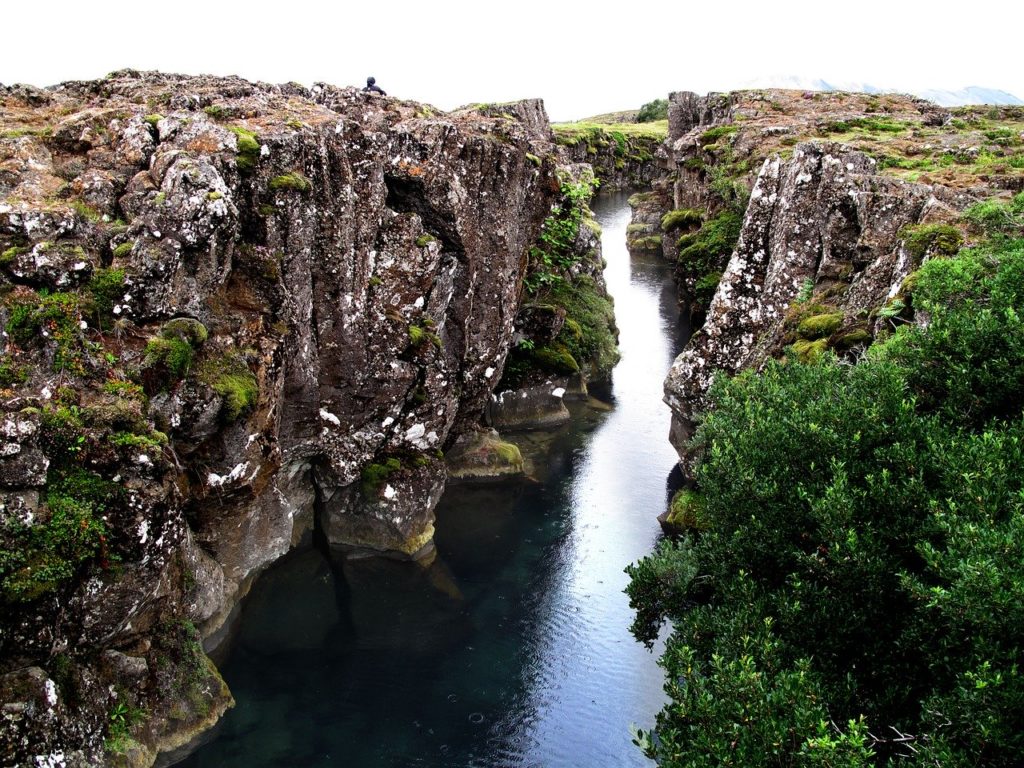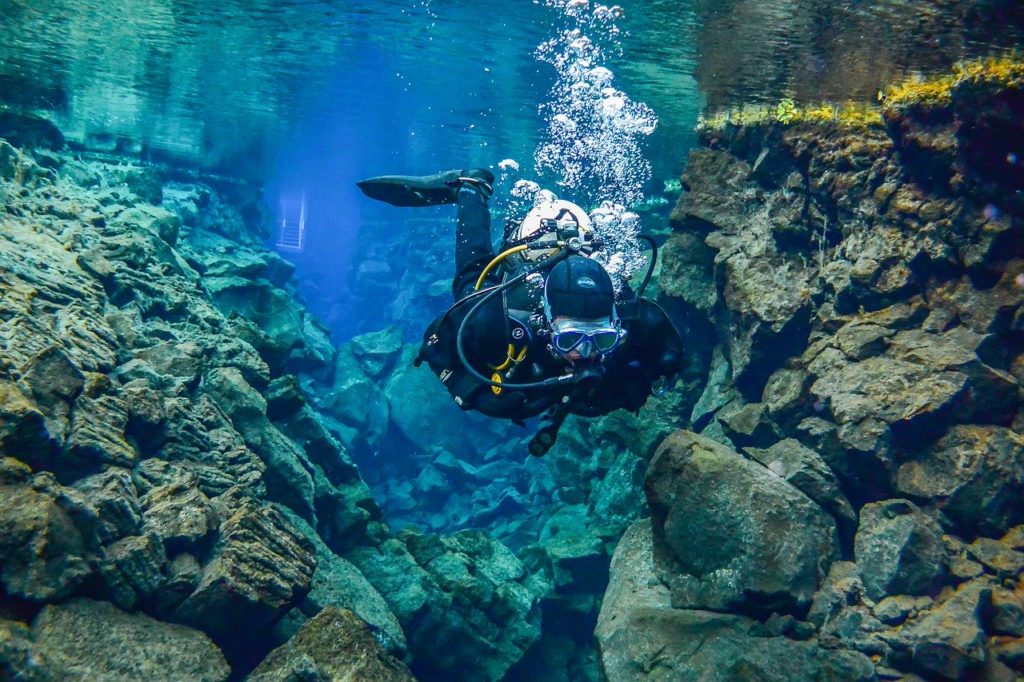Iceland is a fascinating country. Apart from the people, the culture and literature, its geology is pretty cool – if we do say so ourselves.
Iceland is a volcanic island in the middle of the North-Atlantic Ocean, where the wind from the Arctic in the North and the Gulf Stream coming from the South are continually fighting over if we should be able to live here or not. The Gulf Stream is winning for now.
But there is one geological wonder in Icelandic which is spectacular, and that is the fact the island is being pulled apart by the North American and Eurasian tectonic plates.

What are the tectonic plates?
The theory of tectonic plates is not an old one, just about 60-70 years old. It means that the Earth’s crust is broken into tectonic plates which are not fixed in place and move around the Earth.
The North American and Eurasian tectonic plates are pulling apart, and that’s how Iceland was made some 60 million years ago.

But will Iceland split in two?
No, it will not. Only because if it could happen, it probably would have occurred in those millions of years since it was formed.
Iceland is being pulled apart at a rate of about 2.5 cm each year, which is quite a bit, but our volcanic eruptions help by filling up the gaps that could form. The mid-Atlantic ridge runs through Iceland and is the only place you can see it above ground. You can stand between the North American and Eurasian tectonic plates and in the mid-Atlantic ridge at Þingvellir National Park and Reykjanes Peninsula.

Most of Iceland’s volcanoes are also situated in the ridge, where it is being pulled apart. It’s a good and visually stunning road trip to check out both areas. It is possible to do it in one day, but we do recommend you spend two days exploring the areas in one of our great Cozy Campers!
Back to blog